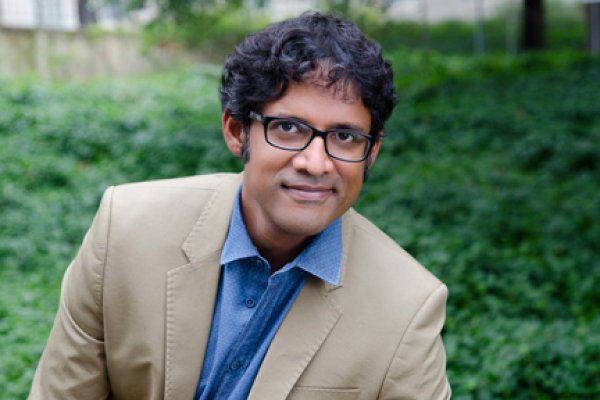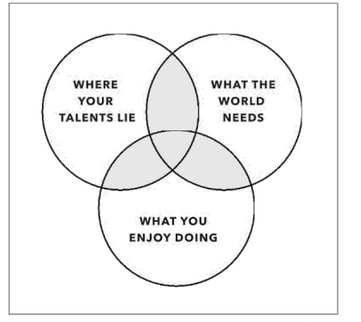When I first picked up If You’re So Smart, Why Aren’t You Happy? I was at a very stressful point in my life. I was in the midst of finishing up a contracted job that sent my life-work balance out of a loop.
I was feeling overworked, I felt unmotivated to do anything, and each day I was waking up with anxiety. I wouldn’t say I was miserable with my current situation, but I definitely wasn’t happy with it either.
I spent a good week taking a break from my routine and sitting down to read this book. Just a few short chapters in my eyes opened up to seeing a whole new perspective on life. When I finished reading I started really questioning if where I was going in life was really leading me down the road to happiness. After taking in the book’s material, and spending several months practicing its teachings, I can confidently say that I am happier than ever.
Every day has been a new day for progress, and I find myself making smarter decisions that lead me to a life of productivity and happiness. This is why I’m choosing If You’re So Smart, Why Aren’t You Happy? as this month’s pick for my monthly productivity book review series. In this review I’ll be going over what this book is about, just what you’ll get from it, and who this book is best geared towards.
So What’s the Book About?
If You’re So Smart, Why Aren’t You Happy is by author, Raj Raghunathan. Raj talks about how he has been studying successful people for many years while tracking their levels of self-esteem.
After years of collecting data, Raj found that as people get older and more successful, their self-esteem levels decrease. This results in a lot of people who’ve gained visible achievements(i.e. promotions, nice houses, raises, etc;) feeling less fulfilled.
This lead Raj to trying to find the answer to the age-old question: Why are smarter and more successful people often less happy?
Who’s The Author?
Raj has a very rich background in education. After graduating from the Birla Institute of Technology and Science he went on to obtain his PhD in the Stern School of Business in New York.

Raj later went on to teach higher learning where he currently is a Marketing professor at University of Texas, McCombs school of Business. Along with teaching business related courses Raj also teaches a course that expands on the material covered in this book. He also offers all his course material for free, online, at Coursera.
Raj covers a broad category of fields to support his findings, some of which include: Behavior Economics, Neuroscience, Behavior Psychology, and more.
The Juicy Content
While the book has 17 has chapters total, 14 of these chapters are separated in their own unique habit-sin paired sections. Raj starts off each section with a deadly happiness sin. A happiness sin is essentially a widely believed concept that most of society believes leads to a happier life. Such sins include: Striving to be the best at something, chasing after love, and pursing activities leading to short-term happiness.
Each happiness sin is debunked by Raj using detailed scientific evidence on why the widely believed idea just doesn’t work.
One of these happiness sins, for example, is the idea of becoming superior at a skill. Whether you are dreaming to become the world’s best guitarist, a famous celebrity, or wealthy beyond belief; the biggest mistake people make is that they never have a clear idea of where the end point lies. Raj states:
“It’s not difficult-if not impossible- to come up with objective yardsticks for assessing one’s standing relative to others in almost any domain.”
He explains that these ‘proxy’ yard sticks we create are far too ambiguously defined to be used as a measurement for success. Since we are trying to be superior without a clear sense of what that means, a lot of us never achieve that idea of superiority.
Instead, Raj Suggest that we forgo the idea of superiority and pursue what is known as Flow. For those of you unfamiliar with flow, let’s go over a brief explanation of what flow is.
The Flow State, or “Flow”, was a concept theorized by Mihaly Csikszentmihalyi. Mihaly defines Flow as a state of mind where you’re completely fixated at a task present to you. You may have experienced something similar to this before, like working on a project and losing track of time in which several hours passes by you in a much shorter amount of time. This, in general, is the idea of flow.
Raj breaks this down by stating there are three requirements for getting into flow:
-
- Find where your talents lie
- Figure out how your talent can benefit others
- Enjoy doing them

The book delves more into the concept of flow as well as how you can get started with it, but for now we’ll move on to Raj’s main point for flow.
In Raj’s explanation of flow he touches upon how it’s ideal to find a job that can best lead you to this flow state consistently. A lot of people who realize they are not pursuing their idea pathways may be tempted to quit their jobs to pursue their passions. However, Raj argues that this is not the ideal path to go down. He explains that people often quit their jobs to pursue these ambitions will often lead to less happier lives.
Instead, Raj suggests to go at these ambitions slowly and organically. An example of what this means is say you want to own a scuba diving equipment store. Instead of immediately leaving your job and taking out a bank loan to open a shop, it would be better to follow this passion at a more gradual pace.
This can be done by volunteering somewhere that already rents out scuba diving equipment and work there an average of 4 hours a week. Not only will this give you a better idea of how the business works and earn both skills and familiarity with running a shop, but it also does not force you take on a risky investment. If you find out that owning a scuba diving rental shop is not your passion you have the opportunity to back out with no consequences.
Without giving too much of the book away, If You’re So Smart, Why Aren’t You Happy? breaks down these happiness-sins in a similar fashion. Other ideas Raj discusses are:
- Not feeling needy and valuing relationships
- How to handle things that are out of your control
- Why you should pursue your passion dispassionately
- and more
All of these ideas are backed with various studies, personal examples from the author, and evidence from professionals in their respected fields.
Who Should Read This?
I personally feel that this a book that should be explored by everyone. A lot of what Raj touches upon are widely held beliefs most of society regards as true paths to happiness. However, these ideas tend to lead us down an unfulfilled path many people fall victim to.
Since reading this book I found that it has transformed my views on life. Whenever I do feel bummed out I am able to trace it back to one of the 7 Deadly Happiness Sins and quickly transform my disappointment into a state of mind that leads to productivity and happiness.
Final Thoughts?
Raj does an excellent job compacting a lot of research down to a 300 page, easy-to-read, book. Despite how foreign many of these fields were to me, Raj succeeds in explaining these concepts down to a simplistic manner.
This book is backed with very illustrated examples and well-documented studies to support Raj’s claims. I ended up learning a lot from this book and have to say that, after putting what I learned into practice for several months, I’ve noticed my life feels a lot more fulfilling.
To learn more about Raj and book you can visit Raj at his website, happysmarts.com or get your own copy of If You’re Smart Why Aren’t You Happy.